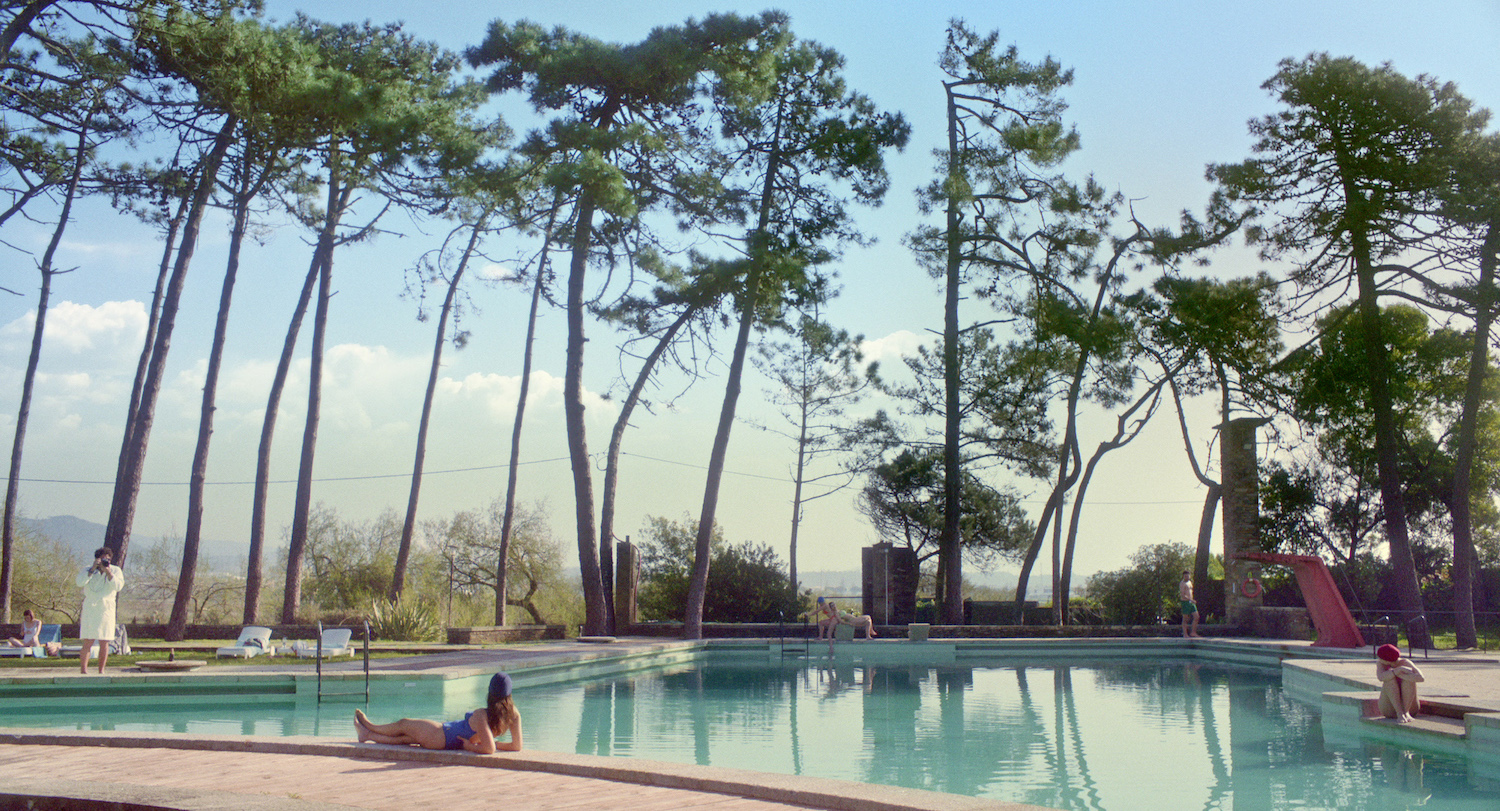Bad Living and Living Bad (João Canijo, 2023). Or in Portuguese: Mal Viver and Viver Mal. Either way, the two names are so similar that I will never stop checking which film is which. It has to be intentional, for they bleed into each other constantly, like watching yourself in a smashed mirror.
Or perhaps Through A Glass Darkly (Ingmar Bergman, 1961). The spirit of Bergman, and his dramaturgical hero, August Strindberg, lingers over the entire two-part chamber project, both in the austere compositions and the theme of neurotic, controlling mothers. It’s all the more unsettling thanks to its ambitious scope, using an innovative two-film structure to create striking parallels and deepen anxieties.
The modest Hotel Parque do Rio in Ofir, Northern Portugal — yours for only 40 euros a night on Booking dot com— is the claustrophobic setting for both films. The first, Bad Living, focusses on the owners of the hotel. The second, Living Bad, focusses on its guests. Yet this distinction is only half true, because the conversations and movements of the guests are easily heard and seen in the former and vice versa. Using long takes, static or slow moving frames, foreground in one film might become background in the other, dialogue overlapping Altman-like to push an atmosphere of dread throughout. It’s like a severe The Rules of the Game (Jean Renoir, 1939), only the deep focus that moves between master and servant has been muddied, refracted and diced up, stretched over four languorous, punishing hours.
Bad Living plays in Competition, while Living Bad plays in Encounters. The good news is that if you catch one of the two films, the dramaturgy in both films are strong enough to be enjoyed on their own.

The first is essentially one story: a crumbling hotel run by women who can never seem to find a way to talk to each other. Legendary Portuguese actress Rita Blanco stars as the owner Sara, mother of Piedade (Anabela Moreira) — who runs day-to-day operations — and grandmother to the rebellious Salome (Madalena Almeida). Piedade’s estranged husband has died, leaving Salome to live with her mother and two aunts and help around the hotel.
This should be a time for Piedade and Salome to reconnect, but Piedade seems far more concerned with her small black puppy Alma (adorable little fluff), who she carries with her at all times. She will leave conversations randomly. As the grandmother says, “She’s always rushing to go nowhere.” This void inside her extends to the way she talks to her own daughter, unable to provide her comfort in grief. She isn’t helped in any way by her own haughty mother, who carries the clue to Piedade’s existing condition.
This sense of alienation is extended by the striking camera movement, often moving away from the characters, and floating into empty spaces. Then, as the film develops in emotion, more close-ups are employed, creating a tightening sense of emotion as these women try and find common ground. For a movie that is fascinated in looking around and seeing what else is going on, it’s heartbreaking to see the characters so viciously locked into a prison of their own perspective.
The second film wears the Strindberg/Bergman inspiration more directly, freely adapting three Strindberg plays: Playing With Fire, The Pelican, and Motherlove. The first is about a cheating, jealous couple undone by a maternal phone call; the second is a spiritual remake of Bad Living sprinkled in with influencer satire and film noir tropes; and the third, a heart-rending, no-holds-barred relationship drama about two women in love and the mother-in-law hell-bent on breaking it up.

While it all stands pretty strong on its own, the enjoyment is naturally deepened by the two film conceit. Moments in the first movie that start in media res get prequels here, while other parts are extended and fleshed out. Other things we may believe were incredibly meaningful are not noticed at all. The spaces of the hotel are expertly mapped — from the waiting-room green of the hallways to the angular shapes of the pool, to the basement-like interior of the kitchen, to the hush-hush pretensions of the dining room. And they are constantly remapped. Shot from different angles. Shot in close-ups. The same shot again, but held longer or shorter; the meaning we impart from them differing depending on what we already know.
On a purely narrative level, there’s so much to enjoy here. On a dramatic level, this is the saddest hotel I’ve been to since Greta Garbo asked to be left alone.
The narrative playfulness isn’t so much about uncovering hidden mysteries as constantly extenuating a feeling of maternal malevolence, with Canijo finding different ways to examine the central theme of hereditary trauma. It should get repetitive, but the emotional truth of these doublings comes naturally from his approach to screenwriting and actors. Like Mike Leigh, his screenplays are not written in advance, but come through conversation, workshopping and rehearsal. This approach seemingly allows actors to fully inhabit their characters and make their conflicts meaningful.
While it’s not unfair to say the slow approach and subject matter make them difficult, depressing viewings — especially over a four-hour period — an overall haunting feeling is maintained by the specificity of dialogue and the carefully pitched tenor of the players. Confusion and a further sense of the uncanny comes through the casting; several women look almost identical. Imagine 3 Women (Robert Altman, 1977) but with, like, several more women thrown in!

Throughout both films, Canijo, working with cinematographer Leonor Teles, returns to the same image: an exterior of several hotel rooms, several movies in miniature. Each lighted interior is slowly — finally — illuminated throughout the film, while still suggesting more narratives to come. It’s a simple yet powerful motif. While it doesn’t make me want to rewatch them any time soon — for one, I’ve never been that keen on rewatches anyway — it does posit a fascinating concept for a film diptych: something you can re-experience several times if only to catch connections that eluded you on a first sitting. A great idea for a film couplet, exactingly executed.
Redmond is the editor-in-chief of Journey Into Cinema.
